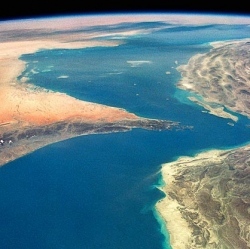
According to the Surrey Space Centre, there are some 7,000 tonnes (7,716 tons) of space debris circling the Earth, consisting of dead satellites, booster rocket stages, paint chips, and shrapnel from collisions. Whizzing in orbit at tens of thousands of miles per hour, even a small fragment could destroy a satellite.
To help clean things up, the Centre has announced that it is leading a mission early next year to send the RemoveDebris demonstrator into orbit to test low-cost technologies that could be used to collect and remove space debris.
With the backing of the European Commission, the RemoveDebris mission is led by the Surrey Space Centre in partnership with Airbus, Surrey Satellite Technology Limited (SSTL) and others. It consists of a small cubical satellite based on the SSTL X-50 platform and is designed to carry four experimental payloads, cameras, and bays for two cubesats that will play the part of "debris."
If everything goes according to schedule, RemoveDebris will travel to the International Space Station in early 2017, where it will be launched into space. It will then move into a lower orbit, to carry out four experiments before re-entering the Earth’s atmosphere to burn up.
In the first experiment, a cubesat designated DS-1 will be released. As it travels away from the satellite, it will inflate a balloon, which will act as a deorbit device while providing a larger target for RemoveDebris to aim at. When it reaches a range of about seven meters (23 ft), a weighted net developed by Airbus will be fired at the Cubesat.
The net will wrap around the satellite and the balloon while cameras record the results. The balloon will slow the cubesat down until it re-enters the atmosphere, though in a real operation the "debris" would be snared by the clean-up satellite and towed away for disposal.
In this, the second cubesat (DS-2) will be released and two stereoscopic vision-based navigation (VBN) cameras and a Lidar system will track it. The purpose of this is to test VBN systems under space conditions as a way of rendezvousing with and capturing tumbling space debris, such as a damaged or derelict satellite.
The third experiment is a harpoon, which is designed to impale debris for collection. In this case, the satellite will deploy a 10 x 10 cm (4 x 4 in) target on a boom sticking out 1.5 m (4.9 ft). The harpoon will fire at the target and a toggle will spring out to prevent it from slipping out again.
The final experiment involves the RemoveDebris satellite itself. When the other three experiments have been completed, it will release an umbrella-like mylar sail on carbon fiber booms and an inflation device will spread the sail out to a width of one meter (3.3 ft). Once in position, the sail will catch onto the tenuous remnants of the upper atmosphere and act like an airbrake in the same way as the balloon in the net experiment. The satellite will slow down, lose altitude, and eventually burn up on re-entry.
"Various orbits around the Earth that are commonly used for satellites and space missions are full of junk, which is a significant danger to our current and future spacecraft," says Dr Jason Forshaw, Surrey Space Centre project manager on the RemoveDebris team."Certain orbits, which are commonly used for imaging the earth, disaster monitoring and weather observation, are quickly filling up with junk, which could jeopardize the important satellites orbiting there.
A future big impact between junk in that orbit could result in a real life ‘Gravity-like’ chain reaction of collisions. The international community needs to start working together now to remove space junk. The space around Earth is part of Earth’s environment and keeping it clean is a common responsibility. Our mission, RemoveDebris, is one of the first concerted efforts to pioneer future technologies to remove space junk."
